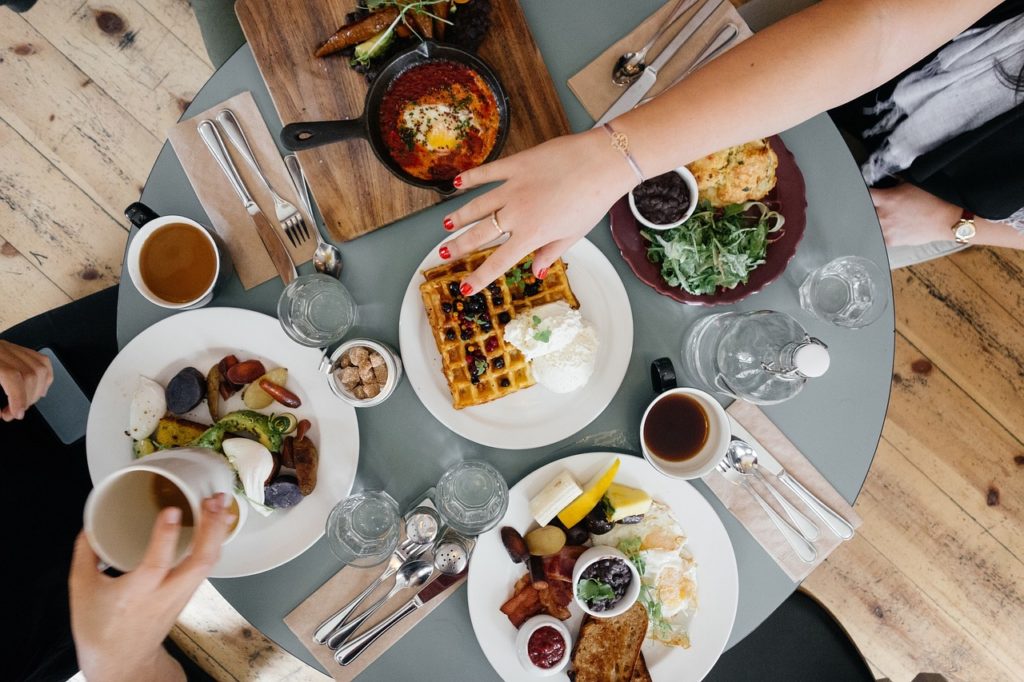5 Easy Ways To Eat For More Energy
October 21 2019
It’s a no-brainer that what you eat plays a huge role in giving you more energy. But those quick fixes – nibbling on biscuits, scoffing chocolate and chugging on caffeine – are like fool’s gold. They may seem to give you a momentary surge of energy, but it all too quickly drops away.
For all-day energy, try following these five easy food rules.
1. Eat a breakfast of champions
If you’re prone to mid-morning brain fog, try taking just a few minutes to make a healthy breakfast before heading out in the morning. Research shows that a nourishing breakfast improves both mental and physical performance for the entire day.
Tips for you
+ Make it with protein
“Swap jam or Vegemite on toast for more satisfying choices, such as half a cup of plain Greek-style yoghurt sprinkled over untoasted muesli, or a poached egg on wholegrain toast,” suggests dietitian Brooke Delfino.
+ Shortcuts not short-change
“If you’re in a hurry, it’s easy to grab a muffin with your takeaway coffee, but the sugar and refined carbs will leave you with an energy slump afterwards,” Brooke says. So the night before, or before you leave for work, blitz up a high-protein, on-the-go smoothie. “Try mixing banana, berries, oats and plain yoghurt with milk.”
2. Pump iron
Roughly one in three of us is deficient in iron, a common cause of low energy. While popping a vitamin pill is one way to help, a healthier option is to eat more iron-rich foods: lean meat, fish, poultry, eggs, tofu, legumes and spinach.
Tips for you
+ Maximise iron
Absorption Foods high in vitamins help the body absorb iron. Have fish with wilted spinach or vitamin C-rich sweet potato. Or top Greek-style yoghurt with fresh berries.
+caffeine alert
Coffee and tea decrease your body’s ability to absorb iron, so avoid them at mealtimes.
3. Trade up your carbs
“For long-lasting energy, eat complex carbs,” Brooke says. “These deliver a steady stream of sustained energy.” Start by buying wholegrain bread, wholemeal pasta, oats, brown rice, lentils and beans. Make these your automatic choices at every meal: porridge over a sugary cereal at breakfast; grainy bread over white in your sandwich; wholemeal pasta at dinner.
Tips for you
+Eat more legumes
“Add more beans, chickpeas and lentils to your meals. They’re rich in energising fibre and satisfying protein,” Brooke says. So they’ll help you feel nicely full and nix mid-meal snack cravings.
+Eye off your grains
“A simple tip to spot the best breads and crackers is to let your eyes guide you,” she says. “Look for dark, visible grains – they show there’s more fibre, so they’ll digest more slowly for that lasting energy you’re after.”
4. Every drop counts
Feeling sluggish can be a symptom of being dehydrated. Without enough water, our blood thickens so it can’t supply optimum energy to our brain and body. Here’s the thing: 75 per cent of us are chronically dehydrated. So ensure you’re drinking 8-10 cups of water throughout the day.
Tips for you
+On-the-go
Keep a large water bottle (750ml-1 litre) with you throughout the day and set a goal to top it up 2-3 times each day.
+Thirst vs hunger
It’s common to confuse hunger with thirst. So before you reach for a snack, drink a large glass of water and wait 10 minutes to see if you’re truly hungry.
5. Healthy snacks
Your best choice is a combo of protein and carbs – a couple of grainy crackers with cheese, peanut butter on a slice of toast, or opt for a handful of nuts.
Tips for you
+Be prepared
It’s much easier to resist making bad choices at the vending machine if you’ve already got healthy snacks on hand. So add fruit, yoghurt and nuts to your weekly shopping list. And pop them in your bag before you go to work.
+Size it right
Divide your snacks into individual portions so you don’t overeat at snack time. Pop 30g (about two tablespoons) of nuts into zip-lock bags, and divide large tubs of yoghurt into ½-cup containers.
—
Sourced from Prevention.
